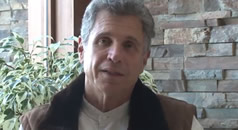End of Life Care Today

On an average, 8 out of every 1,000 persons living today will die within the next year; worldwide, an average of 1.76 persons dies per second. In North America, catastrophic illnesses or accidents account for only about 20% of all fatalities; the majority of people will die naturally, due to long-term disease or the aging process. This gives most of us an opportunity to prepare for our own death and for the deaths of those we love.
At the same time, physicians have more people in their waiting rooms with emotional problems than ever before. There are more elderly patients who live alone with physical disabilities and limitations, facing loneliness and isolation. In modern society, death is seen as an event to be feared; we put our elderly in homes for the aged and shield ourselves and our children from the awareness of our own ultimate demise. There is no real understanding of death, of what happens in the process of dying or beyond. Generally, people today are taught to deny death and, when confronted with its inevitability, are filled with terror and confusion.
Modern medicine has made incredible technical advances in prolonging life and providing drugs to numb pain, suffering or other discomfort. And yet, for the most part, people are not dying well. By concentrating exclusively on the physical aspects of caregiving, western medicine has neglected to address patients’ spiritual and emotional needs. Many of these issues have prompted us to search for better ways to understand and cope with the problems of death and dying.
The Hospice Movement
The hospice movement has changed the face of end-of-life medicine, offering an integrative approach to complement and even take over for medical treatment when everything possible has been done for the dying. Hospices dotted Europe’s high Alpine landscape which followed ancient Roman trade routes; some of the oldest hospices trace their lineage back to the year 1000 AD. The modern hospice movement came to America about forty years ago, due to the extraordinary work of English physician and pioneer, Dame Cicely Saunders.
In 1967 Dame Saunders established St. Christopher’s Hospice in London and challenged the perception that people had to die in agony. As a result of her vision, the modern hospice movement came into being. A realistic hope appeared for a future in which nobody had to die alone or with pain untreated. A viable alternative was created for the end of life, one primarily palliative which provided physical care while tending to the emotional and spiritual concerns of the dying person.
Dr. Elizabeth Kubler-Ross and the Stages of Grief
Another Pioneer who was integral in changing the way we perceive death, as well as improving how we die, was the physician and psychiatrist, Elisabeth Kubler-Ross. She worked directly with dying patients, respecting them as individuals and seeking their experiences in order to better understand the strengths and weaknesses of our medical system. Her work helped us to realize how imminent death affects patients, the professionals who serve them, and the patients’ families. All involved experienced an emotional response to loss and this became the basis for Dr. Ross’ model of “The Stages of Grief.”
Through her work, Dr. Kubler-Ross came to recognize that patients at the end of life are acutely aware of the seriousness of their condition whether they have been told or not. This allowed us to understand the importance of communicating with the dying regarding their illness and its prognosis. When informed that they were terminally ill, patients’ reactions were almost identical. The coping mechanisms they experienced to deal with the loss of life, and all that such a loss encompassed, came in five stages: denial, anger, bargaining, depression and finally, acceptance. When patients reached the final stage of acceptance, interference from outside caused the greatest turmoil, preventing them from dying in peace. No matter the stage of illness or coping mechanisms used, all the patients held on to some level of hope until the last moment. This hope should be honored as it allows patients to maintain their spirit and gives them the endurance they need to go through the end-of-life cycle.
Dr. Kubler-Ross ultimately determined “though every man will attempt in his own way to postpone questions and issues related to death, until he is forced to face them, he will only be able to change things if he can start to conceive of his own death. This must be achieved by every human being alone. If each of us would make a start by contemplating the possibility of our own personal death, we may affect many things, most important of all the welfare of our patients, our families, and finally perhaps our nations.”
There have been many other significant contributors to the end-of-life care, such as Peter Levine. A non-comprehensive list of references is given in the resource section.



 English
English  German
German 